
Belltown is the most densely populated neighborhood in Seattle, Washington, United States, located on the city's downtown waterfront on land that was artificially flattened as part of a regrading project. Formerly a low-rent, semi-industrial arts district, in recent decades it has transformed into a neighborhood of trendy restaurants, boutiques, nightclubs, and residential towers as well as warehouses and art galleries. The area is named after William Nathaniel Bell, on whose land claim the neighborhood was built.

Downtown New Haven is the neighborhood located in the heart of the city of New Haven, Connecticut. It is made up of the original nine squares laid out in 1638 to form New Haven, including the New Haven Green, and the immediate surrounding central business district, as well as a significant portion of the Yale University campus. The area includes many restaurants, cafes, theaters and stores. Downtown is bordered by Wooster Square to the east, Long Wharf to the southeast, the Hill neighborhood to the south, the Dwight neighborhood to the west, the Dixwell neighborhood to the northwest, the Prospect Hill area to the north, and East Rock to the northeast.

Disney Village is a shopping, dining, and entertainment complex in Disneyland Paris, located in the town of Marne-la-Vallée, France. Originally named Festival Disney, it opened on April 12, 1992, covering an area of approximately 18,000 square metres (190,000 sq ft) inside what was then known as Euro Disney Resort.
S. H. Kress & Co. was the trading name of a chain of five and dime retail department stores in the United States established by Samuel Henry Kress. It operated from 1896 to 1981. In the first half of the 20th century, there were Kress stores with ornamented architecture in hundreds of cities and towns.

Poncey–Highland is an intown neighborhood on the east side of Atlanta, Georgia, located south of Virginia–Highland. It is so named because it is near the intersection of east/west Ponce de Leon Avenue and north/southwest North Highland Avenue. This Atlanta neighborhood was established between 1905 and 1930, and is bordered by Druid Hills and Candler Park across Moreland Avenue to the east, the Old Fourth Ward across the BeltLine Eastside Trail to the west, Inman Park across the eastern branch of Freedom Parkway to the south, and Virginia Highland to the north across Ponce de Leon Avenue. The Little Five Points area sits on the border of Poncey–Highland, Inman Park, and Candler Park.
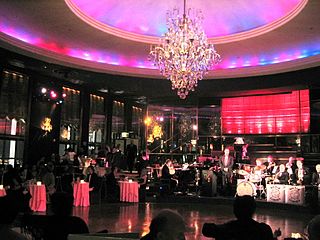
The Rainbow Room is a private event space on the 65th floor of 30 Rockefeller Plaza at Rockefeller Center in Midtown Manhattan, New York City. Run by Tishman Speyer, it is among the highest venues in New York City.

Fox Theatre is a historic movie theater located on Harbor Boulevard in Fullerton, California. Built in 1925 as part of the chain of Fox Theatres, the theater was closed and abandoned in 1987. The Fullerton Historic Theatre Foundation is currently in the process of fundraising and restoring the theater.
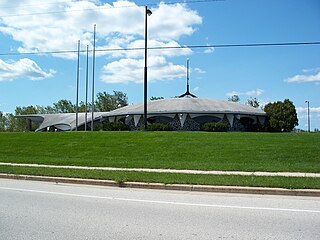
The Gobbler was a motel, supper club, and roadside attraction in Johnson Creek, Wisconsin, United States. It was designed in the late 1960s by Fort Atkinson architect Helmut Ajango for local poultry processor Clarence Hartwig and opened in 1967. The menu featured turkey, prime rib and steak. It included a rotating circular bar that completed one revolution every 80 minutes. The Gobbler was at the intersection of Wisconsin Highway 26 and I-94, halfway between Milwaukee and Madison, Wisconsin. It closed in 1992. The original restaurant building reopened as the Gobbler Theater in late 2015.

Lenox Lounge was a long-standing bar in Harlem, New York City. It was located in 288 Lenox Avenue, between 124th and 125th. The bar was founded in 1939 by Ralph Greco and served as a venue for performances by many great jazz artists, including Billie Holiday, Miles Davis, and John Coltrane. Hip Hop rapper Big L was often seen at this particular bar along with other members of the NFL Crew. Harlem Renaissance writers James Baldwin and Langston Hughes were both patrons, as was Malcolm X.
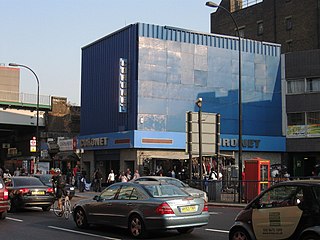
The Coronet Theatre was a large live music and night-club venue with a 2,600 capacity located at 28 New Kent Road in Elephant and Castle, London, England. The historic venue operated as an entertainment venue from 1879 until 2018 and to up to its closure managed to retain all of its art deco features.
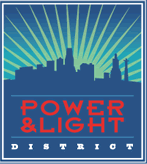
The Kansas City Power & Light District is a dining, shopping, office, and entertainment district in Downtown Kansas City, Missouri, United States, developed by The Cordish Companies of Baltimore, Maryland, and designed by Beyer Blinder Belle and 360 Architecture. The district comprises nine blocks on the south side of the downtown loop. It is located between Baltimore Avenue to the west, Grand Boulevard to the east, 12th Street to the north, and Interstate 670 to the south. The $850 million mixed use district is one of the largest development projects in the Midwestern United States, and is anchored by the renovated Midland Theatre, Alamo Drafthouse Mainstreet Cinema, and the world headquarters of H&R Block. The district was originally projected to generate enough tax revenue to pay for the bonds that were issued to finance it, but the city has instead relied on its general fund and refinancing to make debt payments.

James Addison Johnson was an American architect known for his design of various architectural landmarks in Buffalo, New York, and his use of decorative work that many consider a foreshadowing of art deco design.

Maxwell's Plum was a bar at 1181 First Avenue, at the intersection with 64th Street, on the Upper East Side of Manhattan in New York City. A 1988 New York Times article described it as a "flamboyant restaurant and singles bar that, more than any place of its kind, symbolized two social revolutions of the 1960s – sex and food". Owned by Warner LeRoy, it closed abruptly on July 10, 1988.
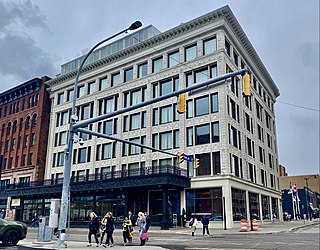
The Harlow C. Curtiss Building, is a historic building located at Buffalo in Erie County, New York. Originally built for office use, the building was named for its owner Harlow Clarke Curtiss, a prominent Buffalo attorney and real estate investor. The building design resembles elements of the works of renowned Chicago architects such as Daniel Burnham and Louis Sullivan, both of whom also designed buildings in Buffalo.
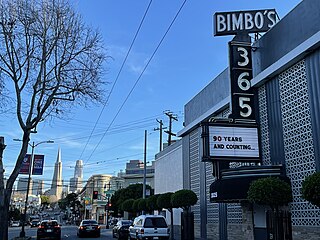
Bimbo's 365 Club, also known as Bimbo's 365, is an entertainment club located at 1025 Columbus Avenue in San Francisco. It specializes in live rock and jazz shows. The location is one of San Francisco's oldest nightclub sites, and has operated under two names with a series of owners. The building started as Bal Tabarin in 1931, the same year that the 365 Club started at 365 Market Street. The two locations under separate ownership consolidated in 1951 to one location owned by Agostino "Bimbo" Giuntoli.

The Peninsula New York is a historic luxury hotel at the corner of Fifth Avenue and 55th Street in the Midtown Manhattan neighborhood of New York City. Built in 1905 as the Gotham Hotel, the structure was designed by Hiss and Weekes in the neoclassical style. The hotel is part of the Peninsula Hotels group, which is owned by Hongkong and Shanghai Hotels (HSH). The structure is 23 stories high and, as of 2022, contains 241 rooms.
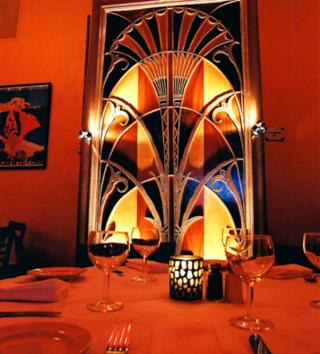
Brasserie Julien was a brasserie-style French cuisine restaurant located at 1422 Third Avenue on the Upper East Side of Manhattan in New York City, as well as a jazz club. The establishment closed at the end of 2012.

















